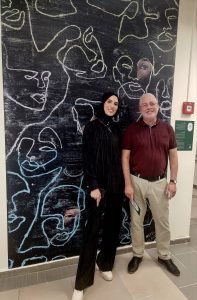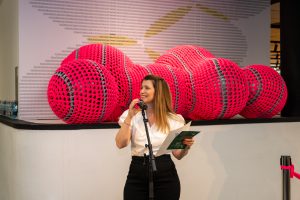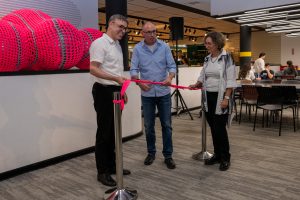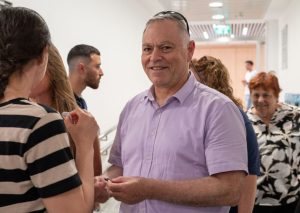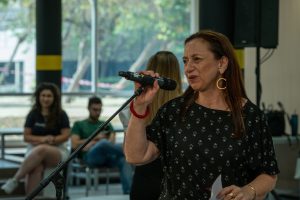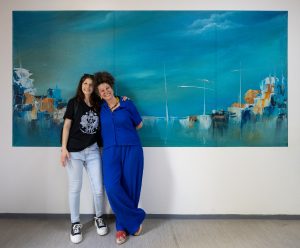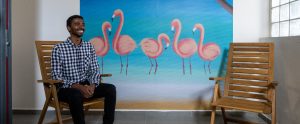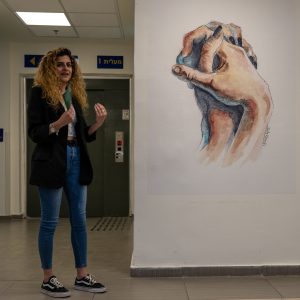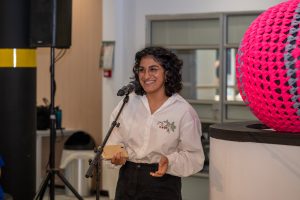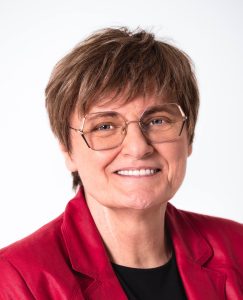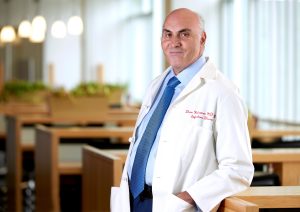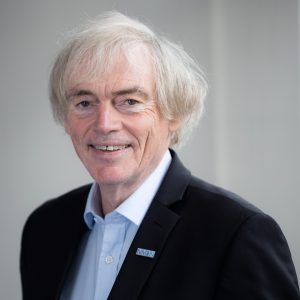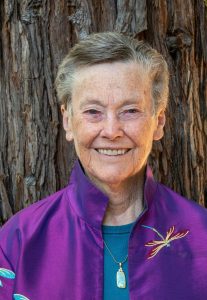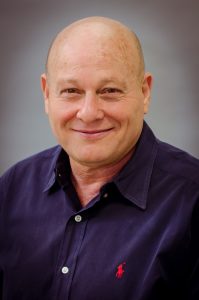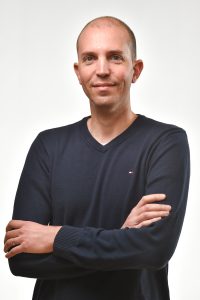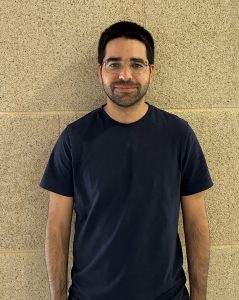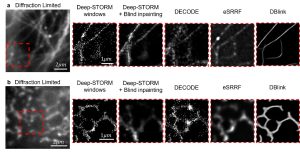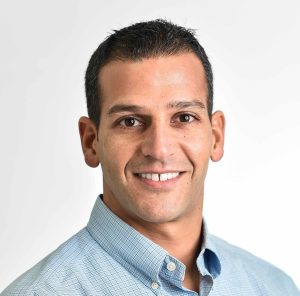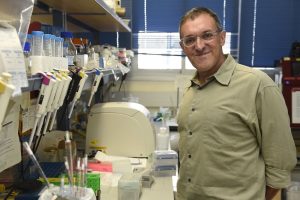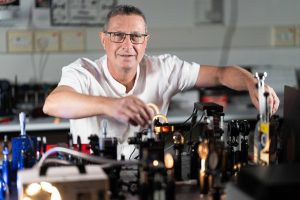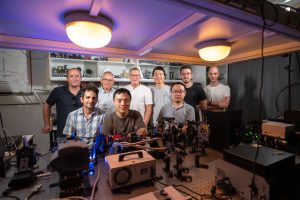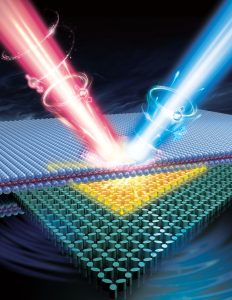“I have a notebook where I have been drawing for the past year during any free time – like breaks, or in the morning. I draw with a pen, so you can’t erase it. My art is a place for imperfection. You can’t erase and go back, and that’s something that released me from the desire for perfection. It gave room to develop and make mistakes. I am glad that at the Technion, which is characterized by the pursuit of excellence and perfection, there is also a place for the imperfect. I never thought that the drawings from the notebook would be displayed on such a public platform. It’s very exciting that it happened, and more so in Ullmann.”
These remarks were made by Ofek Zur, a student in the faculties of physics and electrical and computer engineering, at the opening of a new exhibition at the Technion: “Charging Stations”. The exhibition opened in the Ullmann building, where students from all faculties study during their first year at the Technion.
Curator Valeria Geselev explained that “the exhibition was born from a perception of the academic campus as a public space. The Technion is a kind of city, and like a city, here too there is a tension between belonging and anonymity, between closeness and strangeness, and the question arises as to whose place this really is. The exhibitions in the Ullmann building are designed to strengthen the students’ feelings of belonging and ownership and to create collaborations and conceptual support between students, members of the academic staff, administrative staff and graduates.”
The exhibition began with a “call” that invited the students on campus to participate in the project. in the end, 14 students were selected from a variety of faculties, some in undergraduate studies and others in advanced degrees: Yoav Edelstein (physics), Ohad Aridor (materials science and engineering), Itay Chen (medicine), Joelle Khriesh (biomedical engineering), Mark Levit (physics), Sonia Metelitsa (mathematics), Sharon Nagosa (architecture and town planning), Tamar Nix (architecture and town planning), Johanna Sklar (materials science and engineering), Caroleen Ataria (data and decision sciences), Ofek Zur (physics and electrical and computer engineering), Aseel Qub (materials science and engineering), Alis Kalman (biology), and Alon Romano (architecture and town planning).
The executive committee of the exhibition includes Senior Executive Vice President Prof. Oded Rabinovitch, Dean of Students; Prof. Ayelet Fishman, Dean of Undergraduate Studies; Prof. Hossam Haick and representatives of the Office of the Dean of Students and the Department for Certification Studies. Prof. Rabinovitch said at the exhibition’s opening, “the entry of art into the Ullmann Building, and the Technion in general, invites us to an expression, a multidimensional experience, and a complement to the intellect, which is the central aspect of studies at the Technion. The Ullmann building is the Technion’s melting pot, the place that shapes Technion graduates during their studies. This is already the fourth exhibition in the building and today it seems natural to us, but none of this would have happened without the initiative of the Academic Secretary for Undergraduate Studies, Dr. Efrat Nativ Ronen. and the curator, Valeria Geselev, and without cooperation between the various departments.”
Dean of Students Prof. Ayelet Fishman said that “as dean, it is very important to me that our students feel that the Technion is a home, and there is no home without pictures, without a personal touch, and without the warmth of a home. This exhibition presents a wide variety of creators and subjects and reminds us that we all love people, and that art speaks to us all.”
Dean of Undergraduate Studies, Prof. Hossam Haick, said that “the exhibitions in Ullmann have given this building a new heart. The people who work in this building have developed an enormous attention for students and are partners in these artistic projects, which transmit creativity inside but also outwards, throughout the campus, and provide us an opportunity to observe and feel our humanity.”
Administrative Affairs Assistant to Undergraduate Studies Reuma Schwartz managed the project on behalf of the Technion. She said that “the project was born out of a desire to help create social relationships between male and female students, to strengthen the relationship between the academic and administrative staff, to create a supportive community at the Technion, to give a platform for the expression of creative students and provide them a unique student experience. In the end, the establishment of the project was a ‘charging station’ for all its partners. Following the exhibition, and thanks to the fruitful cooperation between the Office of the Dean of Students and the Certification Studies Department, there will be additional activities for all students and faculty: artist workshops, interactive activities and more.”
The “Charging Station” is a permanent exhibition that spans five different floors of the Ullmann building: between classrooms, the staircases, and the advisory offices. The exhibition is accessible during all campus operating hours. You can view the exhibition map here.
In the photos:
Reuma Schwartz and behind her is the work of Tamar Nix, “Cloudburst”
Ribbon cutting. From right to left: Dean of Students Prof. Ayelet Fishman, Senior Executive Vice President Prof. Oded Rabinovitch, and Dean of Undergraduate Studies Prof. Hossam Haick
Efrat (Efi) Barkai Goral, the “Israeli Hatikvah” at the Technion
Curator of the exhibit Valeria Geselev (right) with student Johanna Sklar and Sklar’s creation “Blue Bay”
Student Sharon Nagosa and her creation “Family Vacation”
Student Joelle Khriesh and her creation “I’m here for you”
Student Ofek Zur
Photos: Yair Schwartz
For more information and collaborations: Project Manager Reuma Schwartz Reuma@technion.ac.il



